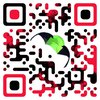In this project I will demonstrate how to implement an FDRS system that provides connectivity from a GPS device to a Node-RED server.
GPS coordinates are obtained using a GNSS module connected to a TTGO LoRa 32 v1 board. The device will send these coordinates using either ESP-NOW or LoRa to another module located in a clear, elevated area. The elevated device next sends the data via ESP-NOW to a ThingPulse ESPGateway Ethernet located nearby. This final gateway posts the coordinates to an MQTT server, where they can be accessed by Node-RED.
Once they've arrived in Node-RED, the coordinates will be plotted using the WorldMap node. You can then log them into a file or database.
 Timm Bogner
Timm Bogner


Thanks sooooo much Timm to share this excellent library!